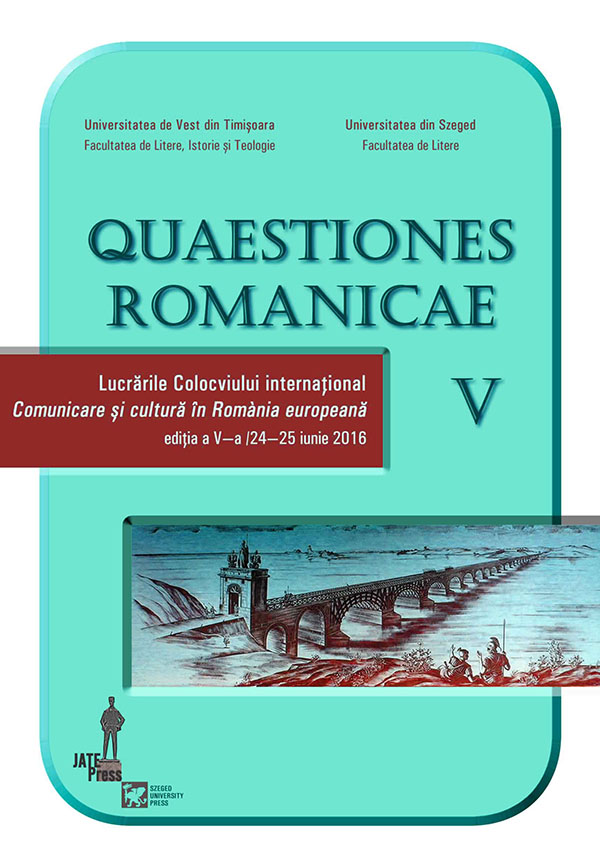Arheologia imaginarului romanobizantin
Abstract: (The Archaeology of the Roman-Byzantine Imaginary) The Byzantine imaginary coalesces around the glorified imperial power (a Roman heritage); but, since the emperor is “delegated” by God to rule the community of believers, he also has the duty to control the dissemination of the sacred image within the boundaries of the empire (a Christian addition). The collective imaginary is at the same time a mirror and a means of this divine “ministry,” blending faith and imperial ideology in a single construction to be preserved in the memory of the Christian community. This construction, nevertheless, has a still deeper source, which is the understanding of politics in classical Athenian antiquity. This interpretation at the core of the Greek Byzance, combined with the political organization of the Roman Empire and the Christian discourse, will bring forth the imperial theocracy and a specific iconography. Neither iconoclasm, nor hesychasm (two currents of thought attached, albeit in different manners, to the Platonic tradition) will therefore be able to diminish the role of the image in the relationship between the believer and the sacred power. The present research is an investigation of the deep-seated roots of Byzantine imaginary. This archaeological approach took into account the funeral rites in the ancient Greek and Roman world in relation to the semantics of image, on the one hand, and the realist or symbolic representations of power, on the other. From this vantage point, the collective imaginary becomes a process of memorization of divine glory or the glorification of its institutions, the community and its creative spirit.
Keywords: imaginary, Rome, funus imaginarium, Byzance, sacred image.
Rezumat: Imaginarul bizantin se formează în jurul puterii glorificate a împăratului (moştenire romană); pentru că acesta este „delegat” de divinitate să guverneze lumea credincioşilor, are şi datoria să gestioneze prezenţa imaginii sacre în întreg imperiul (adaos creştin). Imaginarul colectiv este oglinda şi suportul puterii instituţionale pentru îndeplinirea acestui „ministeriat” divin. Mai mult decât credinţa sau ideologia glorificatoare a puterii, el le reinventează pe amândouă, pentru a fi memorate laolaltă de comunitatea creştină. Îl hrăneşte însă o rădăcină şi mai adâncă: interpretarea dată politicului de antichitatea clasică ateniană. Atunci când ea întâlneşte în Bizanţul elin forma politică a imperiului roman şi discursul creştin, dă naştere teocraţiei basileice şi unei iconografii specifice. Nici iconoclasmul şi nici isihasmul (două mişcări de idei din primul mileniu creştin ce amintesc în mod diferit de gândirea platoniciană) nu vor reuşi să diminueze rolul imaginii în relaţia dintre individul credincios şi puterea sacră. În căutarea rădăcinilor imaginarului bizantin se află şi această cercetare. Arheologia sa ne-a dus către ritualul funerar din lumea greco-romană, corelativ cu semantismul imaginii, pe de-o parte, şi cu reprezentările realiste sau simbolice ale puterii, pe de alta. Imaginarul colectiv devine procesul de memorare a gloriei divine sau a celei câştigate de instituţiile sale, de comunitatea însăşi sau de spiritul ei creator
Cuvinte-cheie: imaginar, Roma, funus imaginarium, Bizanț, imagine sacră.
